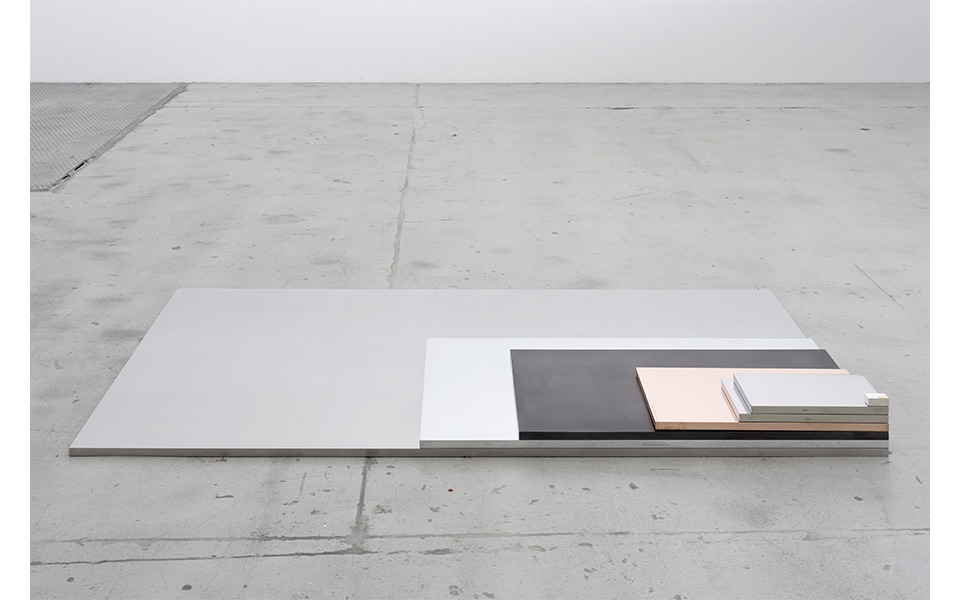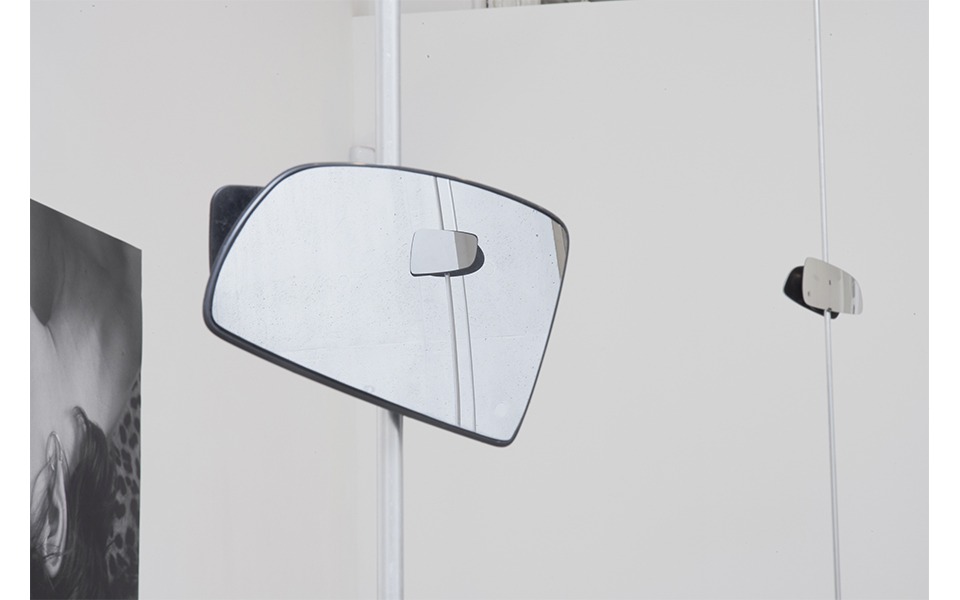Curated by_Goschka Gawlik & Arkadiusz Półtorak
While I Kiss The Sky
13 Sep - 19 Oct 2019

While I Kiss The Sky, Curated by_Goschka Gawlik & Arkadiusz Półtorak
Alicja Kwade, Gabriele Senn 2019
Alicja Kwade, Gabriele Senn 2019

While I Kiss The Sky, Curated by_Goschka Gawlik & Arkadiusz Półtorak
Debora Delmar, Gabriele Senn 2019
Debora Delmar, Gabriele Senn 2019
CURATED BY_GOSCHKA GAWLIK & ARKADIUSZ PÓŁTORAK
While I Kiss The Sky
Nikolaus Gansterer, Alicja Kwade, Natalia LL, Laszlo Moholy-Nagy, Katja Novitskova, Otto Piene, Sung Tieu & Debora Delmar, Guan Xiao
13 September – 19 October 2019
When Jimi Hendrix released Purple Haze in 1967, he did not intend to issue a pop-environmentalist manifesto – yet this was precisely how the song was read by the Hungarian-American artist György Kepes. In the 1969 essay Art and Ecological Consciousness, the director of MIT’s Center for Advanced Visual Studies interpreted the refrain of Hendrix’s hit record – “Excuse me while I kiss the sky” – as an expression of “hopes of the richer, expanded world” and anger at humankind’s “short-sighted selfishness”. Testifying to the first cosmic journeys, advance of first network media and birth of planetary capitalism, Kepes insisted that the closed circuits of information flows and economic exchange on the Earth must be re-imagined as if experienced from the outside. It was artists like Jimi Hendrix that Kepes saw fit for the task of dissociating the modern human’s self-centered perception of the world – trying to see it from within and beyond at once; staying engaged in the human affairs while acknowledging the existence of the temporalities, spaces and agencies that surpass the “here and now” of modernity.
Nowadays, dissociative conceptualizations of subjectivity pervade the expanded field of visual arts. In a 2013 exhibition at Haus der Kulturen der Welt, The Whole Earth, curators Anselm Franke and Diedrich Diederichsen compiled a survey of works that discuss the experience of global, technologically facilitated connectivity as immersive and abstract at once, simultaneously “engaging” and dissociated. This year, the curators of Sharjah Biennial hit a similar note. They discussed the contemporary media ecology as “a space wherein sound hits and reverberates, where memory and imagination echo across surface”, and encouraged the biennial’s visitors to look beyond this opaque “echo chamber”. In works of many contemporary artists, the impending ecological catastrophe and globally relevant social issues are framed within a posthuman, planetary perspective.
The exhibition While I Kiss the Sky traces the dissociative aesthetics’ development throughout the last century. Viewed chronologically, the survey begins with experimental photographs by Laszlo Moholy-Nagy, a mentor and close friend of György Kepes. Taken in 1940s, his shots testify to the drastic changes that human experience underwent at the threshold of the electrified, techno-scientific world. A 1968 video by Otto Piene (Electronic Light Ballet), another collaborator of Kepes, and a 1980 film by Natalia LL (Points of Support) provide two competing perspectives on posthuman, planetary vision; while the former is heavily mediated by techno-scientific developments, the latter is more spiritual and harks back to the ancient science of astrology. In works of a new generation of artists the scientific and the spiritual tend to intersect – thereby inspiring an eclectic, holistic outlook on the planet-wide modernization.
While I Kiss The Sky
Nikolaus Gansterer, Alicja Kwade, Natalia LL, Laszlo Moholy-Nagy, Katja Novitskova, Otto Piene, Sung Tieu & Debora Delmar, Guan Xiao
13 September – 19 October 2019
When Jimi Hendrix released Purple Haze in 1967, he did not intend to issue a pop-environmentalist manifesto – yet this was precisely how the song was read by the Hungarian-American artist György Kepes. In the 1969 essay Art and Ecological Consciousness, the director of MIT’s Center for Advanced Visual Studies interpreted the refrain of Hendrix’s hit record – “Excuse me while I kiss the sky” – as an expression of “hopes of the richer, expanded world” and anger at humankind’s “short-sighted selfishness”. Testifying to the first cosmic journeys, advance of first network media and birth of planetary capitalism, Kepes insisted that the closed circuits of information flows and economic exchange on the Earth must be re-imagined as if experienced from the outside. It was artists like Jimi Hendrix that Kepes saw fit for the task of dissociating the modern human’s self-centered perception of the world – trying to see it from within and beyond at once; staying engaged in the human affairs while acknowledging the existence of the temporalities, spaces and agencies that surpass the “here and now” of modernity.
Nowadays, dissociative conceptualizations of subjectivity pervade the expanded field of visual arts. In a 2013 exhibition at Haus der Kulturen der Welt, The Whole Earth, curators Anselm Franke and Diedrich Diederichsen compiled a survey of works that discuss the experience of global, technologically facilitated connectivity as immersive and abstract at once, simultaneously “engaging” and dissociated. This year, the curators of Sharjah Biennial hit a similar note. They discussed the contemporary media ecology as “a space wherein sound hits and reverberates, where memory and imagination echo across surface”, and encouraged the biennial’s visitors to look beyond this opaque “echo chamber”. In works of many contemporary artists, the impending ecological catastrophe and globally relevant social issues are framed within a posthuman, planetary perspective.
The exhibition While I Kiss the Sky traces the dissociative aesthetics’ development throughout the last century. Viewed chronologically, the survey begins with experimental photographs by Laszlo Moholy-Nagy, a mentor and close friend of György Kepes. Taken in 1940s, his shots testify to the drastic changes that human experience underwent at the threshold of the electrified, techno-scientific world. A 1968 video by Otto Piene (Electronic Light Ballet), another collaborator of Kepes, and a 1980 film by Natalia LL (Points of Support) provide two competing perspectives on posthuman, planetary vision; while the former is heavily mediated by techno-scientific developments, the latter is more spiritual and harks back to the ancient science of astrology. In works of a new generation of artists the scientific and the spiritual tend to intersect – thereby inspiring an eclectic, holistic outlook on the planet-wide modernization.

